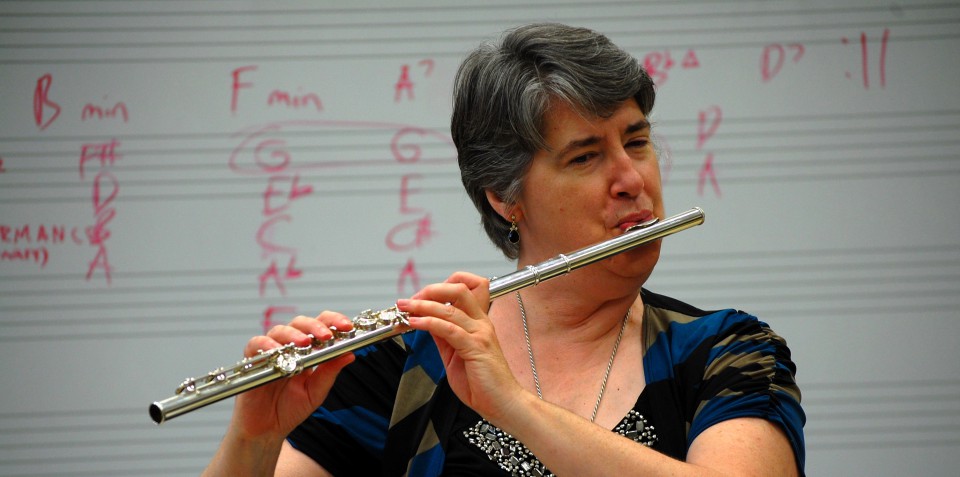The nice thing about the first two octaves of the flute is that the fingerings are sequential and orderly for the most part. And then there is the third octave and it is suddenly a mass of awkward cross fingerings. Why is that? We touched on the reason back when we looked at common fingering mistakes. It is mainly because the fingerings are actually combinations of the overtones for two separate notes. The overtones reinforce each other, making the note more stable and give the note a fuller sound. The open keys provide venting which makes the tone more clear. Here are a few examples: D above the staff is combining overtones for G and D, Eb is combining Ab and Eb, E is combining A and E, F is Bb and F, etc. I am in awe of the ingenuity of Theobald Boehm, who decided to just chuck the whole flute mechanism of his time and create a whole new, sensible mechanism that has stood the test of time. The only other innovations that have stuck as standard on the flute are the Briccialdi Bb we have today (with the Bb to the left, above the B natural), the split-E and the C# trill key that is available on step-up flutes and above.
When do you start teaching third octave fingerings? What do the students need to know how to do to play in the third octave successfully? You can start teaching third octave notes as soon as the kids can play the two different octaves on the fundamental fingerings (D, Eb, E, F, F#, G, Ab, A, Bb, B, C, Db). If they can do that, they will have sufficient control of their air speed to play in the third octave. I use my perennial favorite, the octave exercise, to introduce these notes one or two at a time. It helps the students understand how the third octave fingerings differ from the lower two octaves. Encourage them to use a fingering chart like the one at The Woodwind Fingering Guide
In my experience, most kids can easily learn up to at least high Eb (and maybe even G) within their first year of playing. By second year, they can handle up to at least high G and possibly as far as high Bb. They should know the full range no later than 9th grade. By 9th grade, they should also know alternate fingerings for correcting pitch and controlling dynamics (a topic for a future post).
Be aware that there are several third octave notes that are particularly sensitive to a lack of air speed (or support, if you will). These are the high E, F#-Gb and G#-Ab. They will crack down to the supplemental fundamental (so E drops to A, F# drops to B, G# drops to C#) if there isn’t sufficient air speed. My understanding is these notes are so tricky due to having one hole too much venting. A common add-on for flutes at all levels is the split-E mechanism. This corrects the high E by closing the redundant G# hole (lower G key). You have to weigh the acoustic benefits against the added mechanical complication to decide whether you think it is necessary for your students. As for F# and G#, there have been attempts at mechanical fixes (for example the Brossa F#, which works but is extremely rare, even on handmade flutes). Another important word on the high F#. You must use the B natural thumb key for proper response. If you have the thumb Bb on, it closes the Bb key on the upper right hand causing not enough venting and really poor tone quality.
If you find these entries helpful, please subscribe, share with your colleagues and come back next week for another flute tip. Please comment and ask me questions. Maybe the answer to your question will be the next flute tip. Find me on Facebook or email me at dr_cate@sbcglobal.net. For information about clinics and workshops click here.


Pingback: High Register Hacks for Intonation, Dynamics and Facility | Dr. Cate's Flute Tips
Pingback: Top 10 Posts of 2016 on Dr. Cate’s Flute Tips | Dr. Cate's Flute Tips